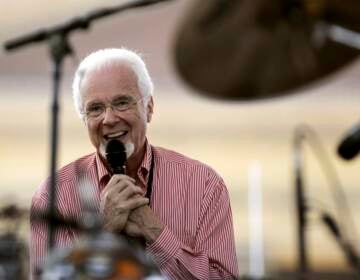Orchestral movement into the Nézet-Séguin era
This weekend, the Philadelphia Orchestra launches its 2012-2013 season with Verdi’s “Requiem,” a piece the orchestra hasn’t taken on in many years. The selection should highlight the talents of the new music director, Yannick Nézet-Séguin, who is known for his work with choirs.
Having just emerged from bankruptcy and needing to raise $25 million this season, the Philadelphia Orchestra needs the young, charismatic and talented Nézet-Séguin to become a bona-fide hit. This is a crucial season for the organization.
The musicians are generally enthused with their new leader, and curious how the ensemble will evolve under his baton. Here are some ways they are preparing for the new season.
Eating properly and ‘killing five birds’
Verdi’s “Requiem” is a long piece — 90 uninterrupted minutes. Audiences and musicians alike have to remember not to drink anything immediately before the performance, for there are no bathroom breaks.
The bassoonists have to remember to eat.
“As a wind player, I cannot play on an empty stomach. But I also can’t play on a full stomach,” said principal bassoonist Daniel Matsukawa. “I wind up eating two dinners,” before and after.
Matsukawa is a busy guy. In addition to his duties with the Philadelphia orchestra, he teaches at Temple University and the Curtis Institute of Music. He does not get as much quality time with his bassoon as he might like.
“We don’t come out of our mother’s womb with an instrument in our hands. It’s a very foreign object,” said Matsukawa. “In a way, it’s like a bicycle. I can get on a bike and I don’t have to think about left foot, left pedal, right foot, right pedal. But still I want to get reacquainted with my instrument, given that it’s a foreign object.”
He has devised a compressed warm-up exercise called “Killing Five Birds with One Stone.” (“It has a terrible title,” he admits.) In about 15 minutes he can do scales, regulate his breathing, hone his attack, limber up his fingers, and acclimate the instrument to the temperature of the room. He teaches his students to kill birds like this.
“They want to warm up for an hour, then they’re pooped and don’t have anything left to practice for another hour,” said Matsukawa. “If you can’t get through a lot in one day, at least do this. Then they are able to spend a significant amount of time practicing and making good music.”
Listening for the song of the drum
The timpani drum comes with a foot pedal that acts a little like an electric guitar wa-wa. With a flick of an ankle the pitch shifts on the fly.
“Starting with the lowest pitch, which is maybe a C or a D, it can go all the way up to an A by moving my foot,” said Philadelphia Orchestra percussionist Angela Zator Nelson, bobbing the timpani sound up and down like a cartoon rubber ball.
The percussion elements are — for the most part — owned by the orchestra, but Nelson brings her own mallets. She has hundreds of pairs of them. Many she makes herself, tailoring them to a specific sound she wants to get out of the drum. She gets a fat tone from a pair of double-wrapped sticks, with a soft German felt wrapped around a stiffer, piano felt inside.
“We’ve developed timpani mallets through needs of the orchestra,” said Nelson. “This orchestra has a big, lush violin string sound, and a nice big brass sound. For the Philadelphia Orchestra we use bigger mallets, with a heavier, bigger sound.”
A percussionist often has to change the pitch of the timpani between movements. For obvious reasons, they can’t whack the skin mid-performance to see if their are in the right key.
Nelson bends down and puts her face a half inch from the skin of the drum, as if to kiss the Mylar, and hums softly. If all is well, the drum whispers in response.
“If I get the right pitch I’ll hear the drum singing back.”
WHYY is your source for fact-based, in-depth journalism and information. As a nonprofit organization, we rely on financial support from readers like you. Please give today.




